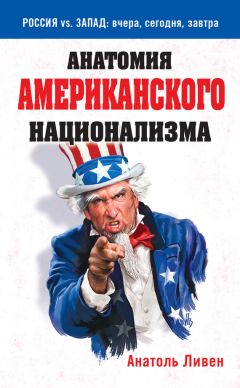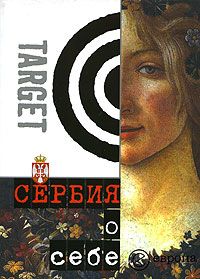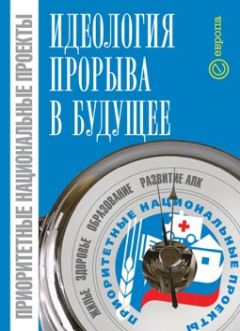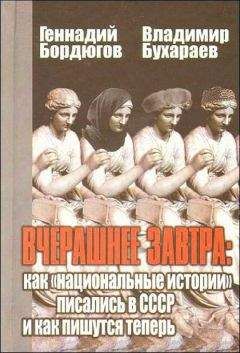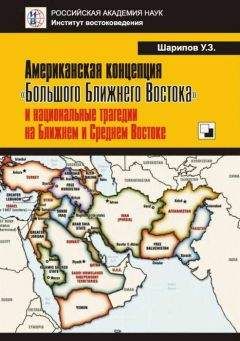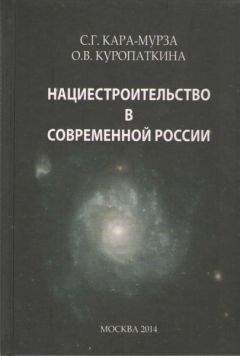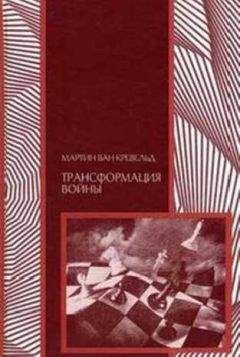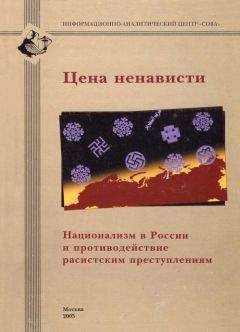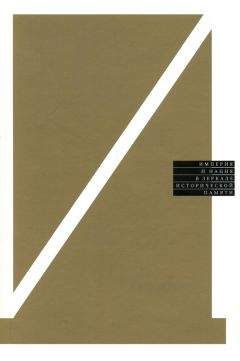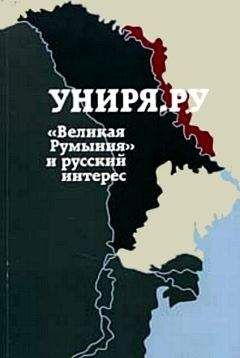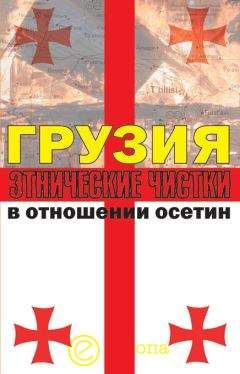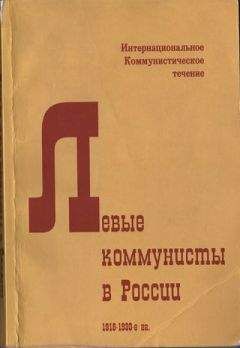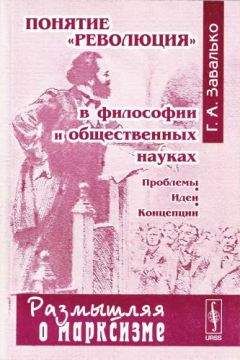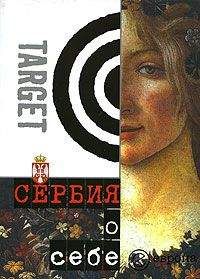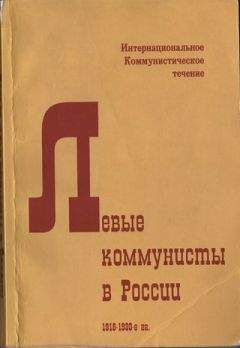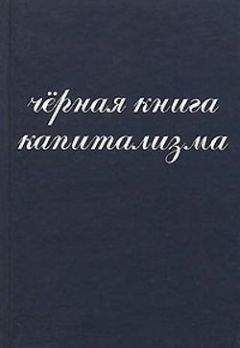Сборник статей - Нации и этничность в гуманитарных науках. Этнические, протонациональные и национальные нарративы. Формирование и репрезентация
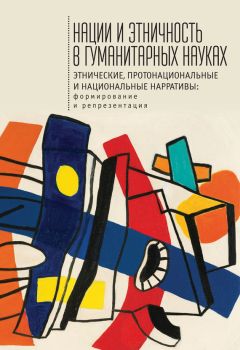
Все авторские права соблюдены. Напишите нам, если Вы не согласны.
Описание книги "Нации и этничность в гуманитарных науках. Этнические, протонациональные и национальные нарративы. Формирование и репрезентация"
Описание и краткое содержание "Нации и этничность в гуманитарных науках. Этнические, протонациональные и национальные нарративы. Формирование и репрезентация" читать бесплатно онлайн.
Издание включает в себя материалы второй международной конференции «Этнические, протонациональные и национальные нарративы: формирование и репрезентация» (Санкт-Петербургский государственный университет, 24–26 февраля 2015 г.). Сборник посвящен многообразию нарративов и их инструментальным возможностям в различные периоды от Средних веков до Новейшего времени. Подобный широкий хронологический и географический охват обуславливается перспективой выявления универсальных сценариев конструирования и репрезентации нарративов.
Для историков, политологов, социологов, филологов и культурологов, а также интересующихся проблемами этничности и национализма.
7. Duck A. De l’Usage et de l’Autorite du Droit Civil Dans les Etats des Princes Chretiens. Traduit du Latin. Paris: au Palais, 1689. 470 p.
8. Dugdale W. Dugdale Origines Juridiciales, or, Historical Memorials od the English laws, courts of Justice.. Inns of court and Chancery. London: printed for Ch. Wilkinson, 1680.490 p.
9. Fulbecke W. A Parallel or Conference of the Civil Law, the Canon Law and the Common Law in this Realme of England. London: printed by A. Islip, 1601–1602. 109 p.
10. Gentili A. Alberici Gentilis De Armis Romanis Libri Duo. Hanoviae: apud Guilielmi Antonii. 1612. 360 p.
11. Horn N. Romisches Recht als Gemeineuropeisches Recht bei Artur Duck // Studien zur Europáischen Rechtsgeschichte. Frankfurt: W. Wilhelm, 1972. S. 171–180.
12. Marzec L. Artur Duck, De Usu et Authoritate Juris Civilis Romanorum in Regno Galliarum.
Przeg4dbazybibliograficznej // Zeszyty prawnicze. 2008. № 8.1. S. 141–150.
13. Marzec L. De Usu et Authoritate Juris Civilis Romanorum – podrz^dna rozprawa czy dzielo swiatowej romanistyki? // Zeszyty prawnicze. 2006. № 6.1. S. 145–157.
14. Marzec L. Prawo rzymskie w dawnej Anglii w šwietle pogl^dów Artura Ducka // Zeszyty prawnicze. 2006. № 6.2. S. 117–136.
15. Ridley Th. A View of the Civile and Ecclesiastical Law. London: Printed by Adam Islip, 1607. 563 p.
16. Santos F. J. A. Jus commune’ vs ‘Common law’ en el siglo XVII: el caso de Arthur Duck // Anuario da facultade de dereito da universidade da coruna. 2003. № 7. P. 63–104.
17. Wijffels A. Arthur Duck et le ius commune européen // Revue d‘histoire des facultés de droit et de la science juridique. 1990 № 10–11. P. 193–22.
REFERENCES
1. Brundage James. The Medieval Origins of the Legal Profession. Vol.l. Canonists, civilians and courts. Chicago: Chicago University Press, 2008. 610 p.
2. Craig Thomas. Thomae Craigi de Riccarton Jus Feudale. Lipsiae: apud J.W. Gleditsch et filium, 1716. 851 p.
3. Davies John. “A discovery of the true cause why Ireland was never brought under obedience of England” in Historical Tracts of Sir John Davies, Attorney general of Ireland and Speaker of the House of Commons in Ireland. Dublin: printed for W. Porter, 1787. P. 1–227.
4. Duck Arthur. De YUsage et de YAutorite du Droit Civil Dans les Etats des Princes Chretiens. Traduit du Latin. Paris: au Palais, 1689. 470 p.
5. Dugdale William. Dugdale Origines Juridiciales, or, Historical Memorials od the English laws, courts of Justice.. Inns of court and Chancery. London: printed for Ch. Wilkinson, 1680.490 p.
6. Fulbecke William. A Parallel or Conference of the Civil Law, the Canon Law and the Common Law in this Realme of England. London: printed by A. Islip, 1601–1602. 109 p.
7. Gentili Alberico. Alherici Gentilis De Armis Romanis Lihri Duo. Hanoviae: apud Guilielmi Antonii. 1612. 360 p.
8. Horn Norbert. “Romisches Recht als Gemeineuropeisches Recht bei Artur Duck” in Studien zur Europaischen Rechtsgeschichte. Frankfurt: W. Wilhelm, 1972. S. 171–180.
9. Marzec Lukasz. “Artur Duck, De Usu et Authoritate Juris Civilis Romanorum in Regno Galliarum. Przeglądbazybibliograficznej”, Zeszyty prawnicze 8.1 (2008). S. 141–150.
10. Marzec Lukasz. “De Usu et Authoritate Juris Civilis Romanorum – podrz^dna rozprawa czy dzielo swiatowej romanistyki?”, Zeszyty prawnicze 6.1 (2006). S. 145–157.
11. Marzec Lukasz.. „Prawo rzymskie w dawnej Anglii w swietle pogl^dów Artura Ducka”, Zeszyty prawnicze 6.2 (2006). S. 117–136.
12. Palamarchuk Anastasija, Fyodorov Sergej. Antikwarnyj diskurs w rannestuartowskoj Anglii. Sankt-Peterburg: Aleteia Publ., 2013. 210 p. (in Russian)
13. Palamarchuk Anastasija. ’’Tsiwilisty w rannestuartowskoj Anglii. Yuridicheskaja korporatsija w poiskah natsionalnoj identichnosti”, Vestnik Sankt-peterburgskogo universiteta. Serija 2, Istorija 4 (2012). P. 60–68. (in Russian)
14. Palamarchuk Anastasija. Tsiwilnoe prawo w rannestuartowskoj Anglii: instituty i idei. Sankt-Peterburg: Aleteia Publv 2015. 312 p. (in Russian)
15. Ridley Thomas. A View of the Civile and Ecclesiastical Law. London: Printed by Adam Islip, 1607.563 р.
16. Santos Fransisco Andres. “’Jus commune’ vs ‘Common law’ en el siglo XVII: el caso de Arthur Duck”, Anuario dafacultade de dereito da universidade da coruna 7 (2003). P. 63–104.
17. Wijffels Alain. “Arthur Duck et le ius commune européen”, Revue ďhistoire desfacultés de droit etde la science juridique 10–11 (1990). P. 193–22.
Nationhood and Ethnicity at the Frontier: A Study of Western Hunan from Pre-modern to Early Modern China
Peng Lijing
This paper is a brief account of the construction of the ethnic identity of the Hmong, or in modern Mandarin ‘Miao* in pre-modern historical narratives. The research area is West Hunan (see Map l[120]), where the special historical and geographical environment bespoke the long-term conflicts between minority ethnic groups and dominant imperial forces.
In this paper, I will argue that a close examination of the historical documents does not support the view that the Hmong ethnic group was from the beginning a distinctive unity from other ancient Southern ethnic groups, but suggests that the people known as the Hmong today started to distinguish their ethnicity from the others only since around the 14th century. Furthermore, I also propose that the crystallization of the Hmong ethnic identity and the concept of nation was catalyzed by a series of wars in Ming and Qing dynasties (from the 14th to the 19th century) between central government and local communities.
Map 1. Location of West Hunan (yellow) within Hunan Province of China
In this paper, when the term ‘the Han’ is referred to, it does not denote the current Han ethnic group (or Han Zu 汉族) in the modern Chinese nation. It refers to a vaguely defined criterion in differentiating ancient Chinese people. Before the twentieth century, in the very long imperial history, ‘the Han’ roughly refers to those who conformed to Confucian morality and at the same time traced their sovereignty to the ancient Huaxia Chinese (华夏)[121]. Other ethnic groups, including the Hmong, are regarded as different from the Han. This Hmong ethnicity research also gives us a perspective about the construction of current Chinese nationalism. The current Chinese nationalist ideology traces its legitimacy to the ancient Han identity. And 'the Han’ had never been a well-defined community; they were defined by their relations with non-Han people. In other words, we only know the meaning of being 'the Han’ by looking into the demarcation and categorization of non-Han people in every historical epoch, and how these people are imagined today through historical narratives[122]. In some dynasties the sovereignty went to non-Han rulers. For example, in the Qing dynasty, the rulers were Manchu. However, the expansion of central government’s power to the Southern area was still justified by Confucian politico-moral theory. The Hmong s ethnic identity was constructed both by the central government and by local South-western communities, signifying both sides’ political and economic interests[123].
In the next part I will give a very brief introduction about the earliest historical narratives.
As early as Han and Jin Dynasties (202 BC–420 AD), the peoples living along the vales and glens of areas in south-western China around today’s Hunan Province (see Map 1) were already designated by the mainstream Huaxia Chinese people as Ba or Man (巴人, 蛮人). It was thought by the Huaxia Chinese that among these alien tribes, those who inhabited the northern half were descendents of Lin Jun (廪君, a heroic ancestor), while those in the southern half descended from Pan Hu (盘瓠). Pan Hu was a mythological figure with canine features, or being a divine hound himself. Ancient Chinese myths tell that he was given the hand of the daughter of Emperor Gao Xin (高辛帝), who belongs to the mainstream Huaxia Chinese, and from that couple were derived all the barbarian tribes in the mountains. After the 3-rd century AD, the success of expansion of Han culture ensured the Han authority in economic, political and cultural aspects in the South[124]; and the pattern of expansion was formed: Non-Han people were assimilated into the Han culture mainly through the acknowledgement of political administration of central imperial government, leaving the mountainous areas and settling in plains; while the resistants were forced to move to deeper mountains[125]. During the Nanbei Dynasties period (420–589 AD), many Huaxia Chinese fled southward from their homeland in Northern China and occupied the plains; and the ‘descendents of Pan Hu’ at this time referred more clearly to the mountain tribes in Western Hunan[126]. Researchers generally considered them to be speakers of language(s) mainly of the Miao-Yao (Hmong-Mien) language family and a few of the Tai-Kadai family and the Tibetan-Burmese branch of Sino-Tibetan.
Western Hunan locals living amid Huaxia Chinese during Tang Dynasty (618–907 AD) had already been assimilated to Huaxia in all aspects of life. Yet those inhabiting the vales and mountains kept their own languages, distinct customs and communities[127]. After Tang Dynasty, the range of ‘Descendents of Pan Hu’ in the mind of mainstream Huaxia gradually expanded to include indigenous populations of more southern and south-eastern regions.
In the above historical documentations we can see that before the 10th century, 'the Hmong in classical Chinese archives designates either one or several southern ethnic groups known as ‘the descendants of Panhu\ These mountain tribes were not assimilated into Confucian culture, or to put it the other way, not being under direct control of the sovereignty of Chinese dynasties. It is not until the 14th century that the military expansion of the central government demanded direct political control of the South-western area including today’s West Hunan.
In the next section I am going to summarise the historical narratives in regard to the Hmong from the 14th to the 19th century. To my mind, this is the period when the ethnic identity was gradually constructed:
In many areas of China where local people formed considerable resistance against the spread of the power of the central government, a certain degree of autonomy remained while the local governing heads paid allegiance to the central government. It is called the Tusi Institution (Tusi zhidu 土司制度, lit. native chieftain institution). The local chieftainship was similar to the feudal lordship in Medieval Western Europe. Since the Tusi institution was established in West Hunan, the people under Tusi administration were thus indirectly governed by the central government, but the majority of the Hmong remained Taw barbarians’ outside the dynasty’s jurisdiction. Since the 14th century, Hmong people had appeared as a threatening local power. In the periods when the Han or the other ruling ethnic groups had evident economic development and population boom, or had to migrate and expand their settlements as dictated by the development policies of the central government, their confrontation with Hmong people usually led to fierce warfare. The military blockade line which was intended for the whole Hmong territory gradually advanced into the Hmong heartland during the Ming Dynasty (1368–1644), and finally formed a military defence line against the Hmong in the Wanli period (1573–1620). Later, the famous Hmong Frontier Wall (Miao jiang bianqiang 苗疆边墙, currently known as The South Great Wall) was built along this defence line[128]. The construction of the South Great Wall took over four centuries, through the process of which the central imperial government ideologically claimed that Raw Hmong beyond the wall to be an ungovernable population unworthy of including into the local autonomy governance connected to the central bureaucratic system. However, Tusi also had subtle but solid relationships with Raw Hmong, especially in economic and military communications. Some local chieftains developed military skills and improved their weapon manufactory through learning from Raw Hmong[129]. West Hunan had the longest surviving local chieftainship in Chinese history. In the mean time, the Nation in the mind of the Hmong was almost identical to the Tusi administration. Tusi were allowed by the central government to have their own army, which were not part of the imperial army and had no military obligation towards the government except on occasions of foreign invasion, when they should follow the central government's commandments. The Tusi army was civilian at time of peace but enlisted when wars broke out. Some Hmong people joined the Tusi army and fought against invasions under central commandership as well, such as in the battles against the Japanese pirates (wokou 倭寇) who plundered the coastline of South-eastern China during the 14th to 16th century.
West Hunan entered the central government’s consideration only during Ming Dynasty (1368–1644). The first formal government set up here was the Guardianship (shoubei 守备) established in 1513. Afterwards, as the geographic and strategic importance of this place increased, accompanied by the more frequent riots and conflicts between different ethnic groups, the level of administrative institution became ever higher accordingly. The Tusi institution was abolished in 1707, and the government of Fenghuang Ting, which belonged to the hierarchy of centralised administration, was established two years later. In the early 18th century Qing rulers used two different policies and strategies to construct imperial rule in West Hunan, applying to different communities recognized with separate identities. To the communities which were under the control of Tusi (Cooked Hmong), the state political and juridical institutions of Qing were applied and replaced the native chieftainship. To the communities living outside the control of Tusi, who were mainly Hmong communities beyond the South Great Wall (Raw Hmong), certain specific census registers, conventional regulations, land policies and tax policies were applied alongside the state institutions[130]. These specific policies implied that the Qing Empire recognized the region as the frontier rather than part of the nation.
At this stage, the Hmong representatives and lower officials played an important role in forming the perception of the culture of these communities as accepted by central government, and in mediating the relationship between Qing central government and local communities. The Qing administration of Southern Xiangxi in this period, especially the land policies, led to the tragic confrontation between Hmong people and Qing State. In forming the truce agreements and other similar official negotiations, local communities gradually formed a self-recognition of a collected identity. Thisprocess also included very complicated interactions among difference local forces, and among different communities who were collectively referred to as the Hmong. As a result, the Hmong identity was officially constructed from the nation's perspective and selfconsciously constructed by local communities in West Hunan.
Подписывайтесь на наши страницы в социальных сетях.
Будьте в курсе последних книжных новинок, комментируйте, обсуждайте. Мы ждём Вас!
Похожие книги на "Нации и этничность в гуманитарных науках. Этнические, протонациональные и национальные нарративы. Формирование и репрезентация"
Книги похожие на "Нации и этничность в гуманитарных науках. Этнические, протонациональные и национальные нарративы. Формирование и репрезентация" читать онлайн или скачать бесплатно полные версии.
Мы рекомендуем Вам зарегистрироваться либо войти на сайт под своим именем.
Отзывы о " Сборник статей - Нации и этничность в гуманитарных науках. Этнические, протонациональные и национальные нарративы. Формирование и репрезентация"
Отзывы читателей о книге "Нации и этничность в гуманитарных науках. Этнические, протонациональные и национальные нарративы. Формирование и репрезентация", комментарии и мнения людей о произведении.







